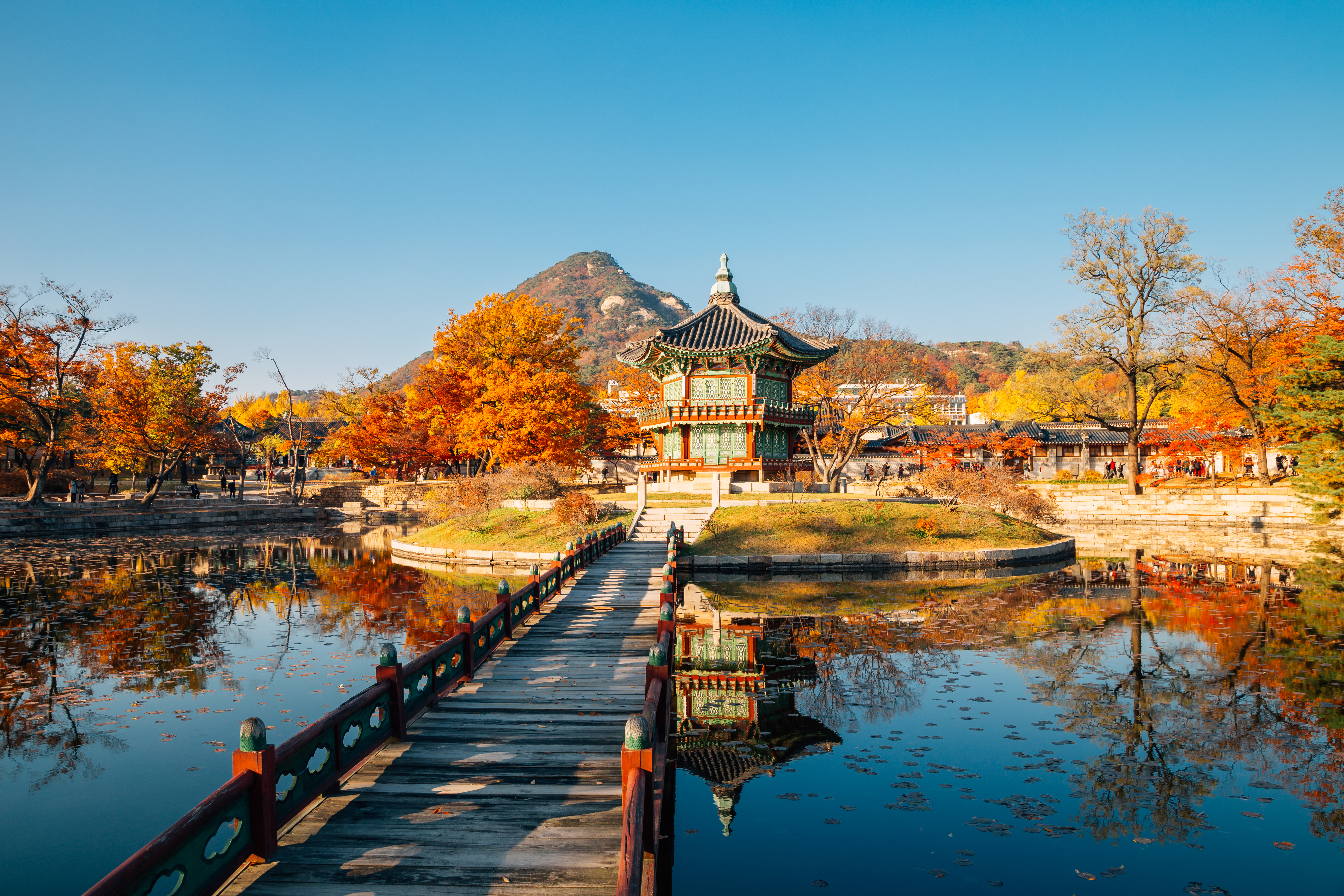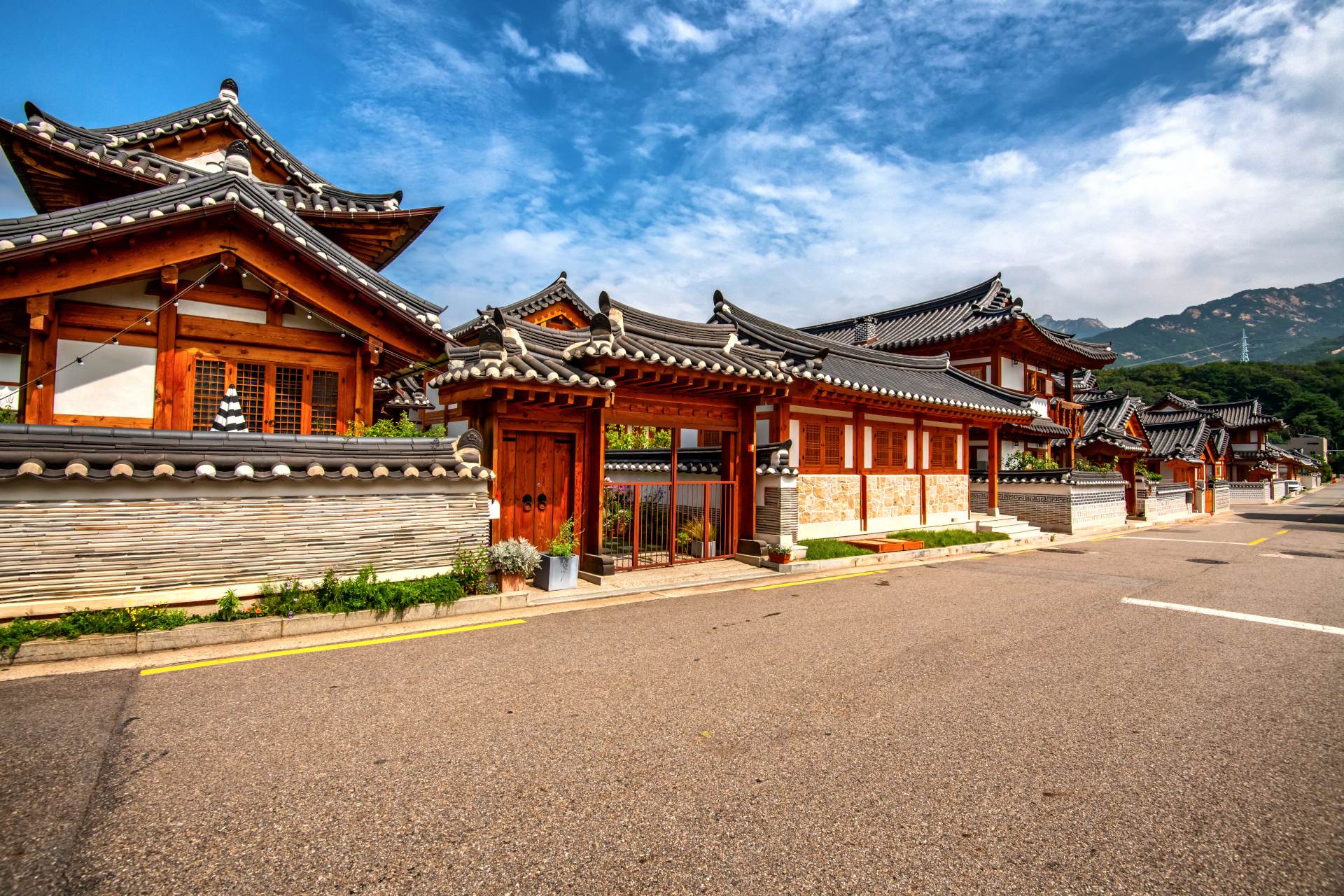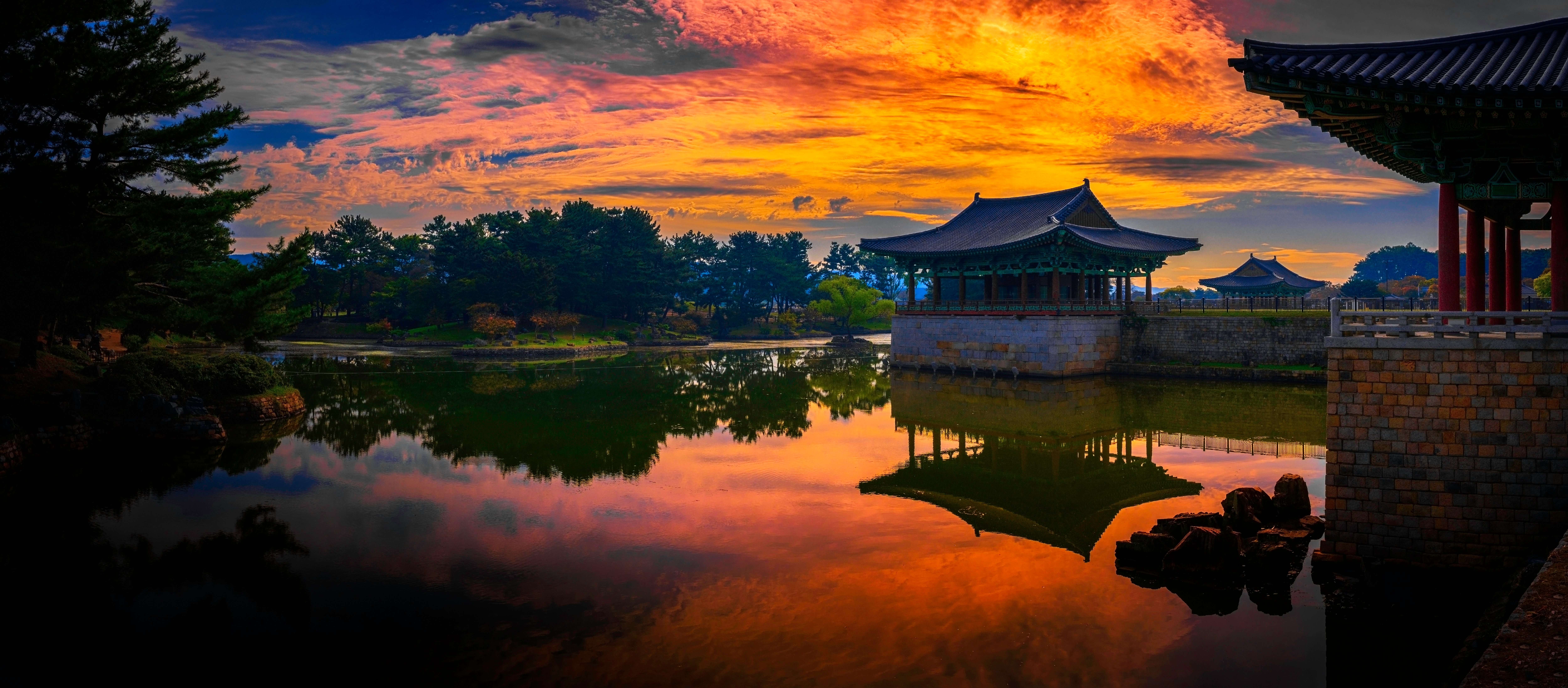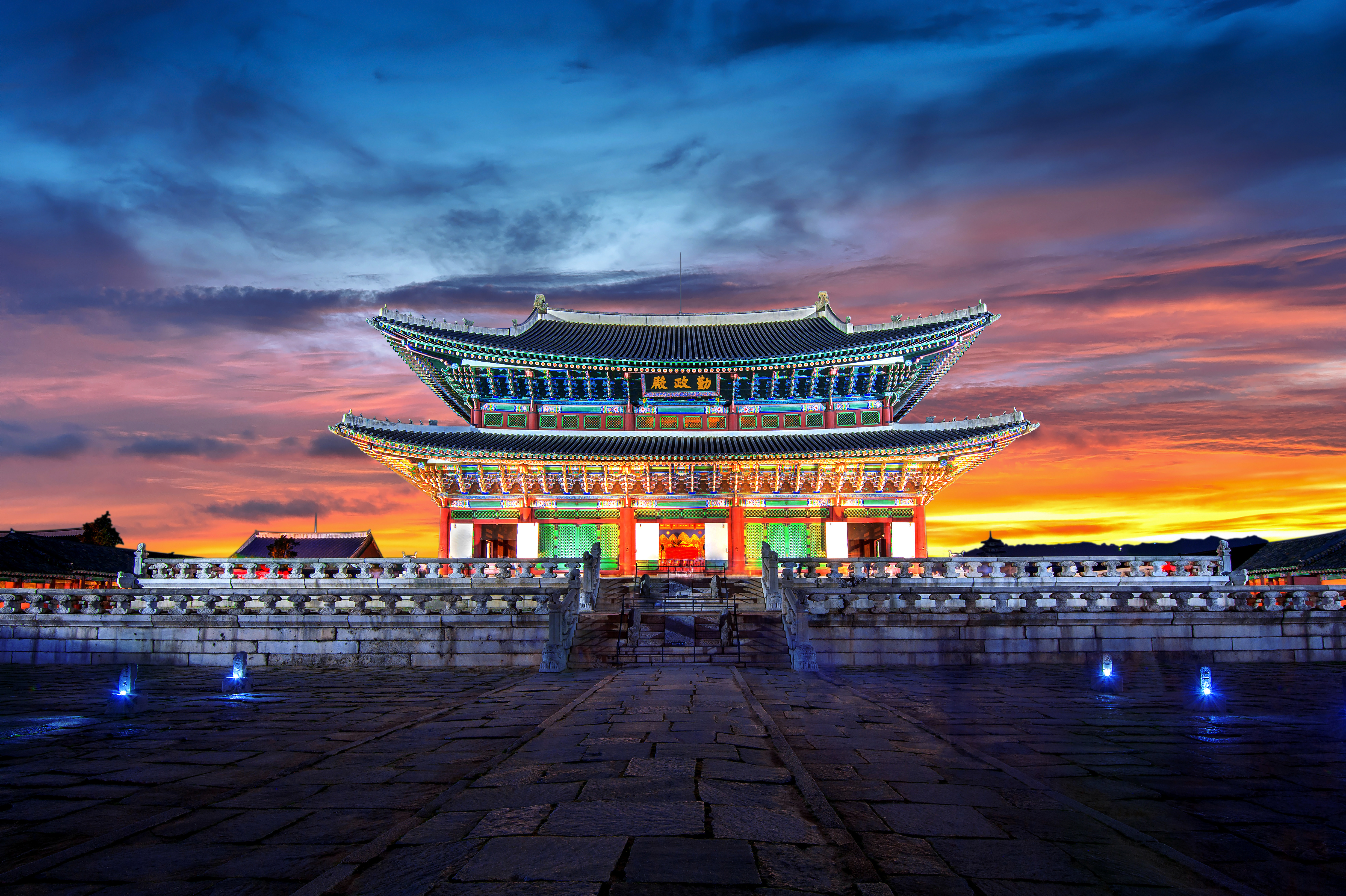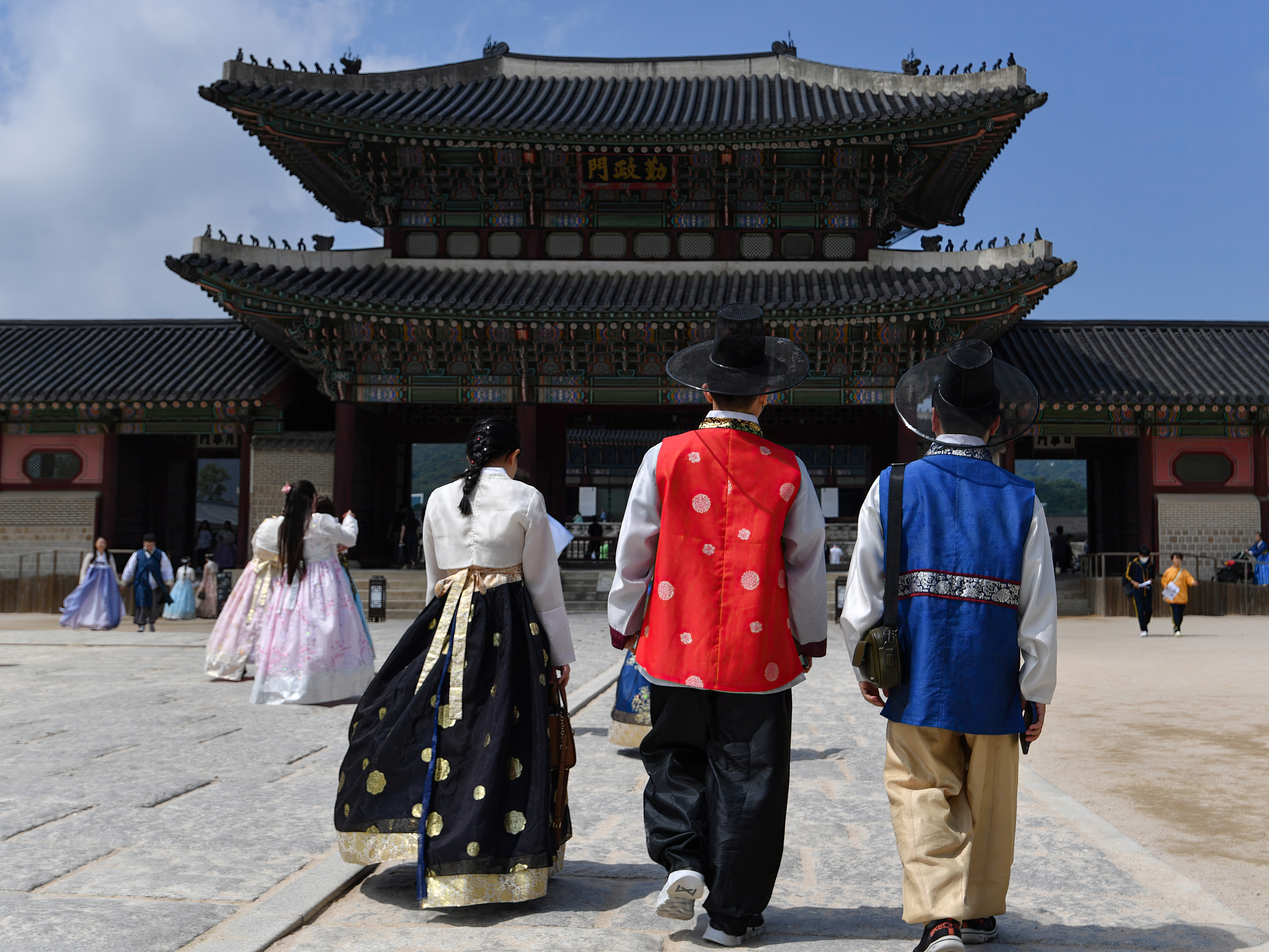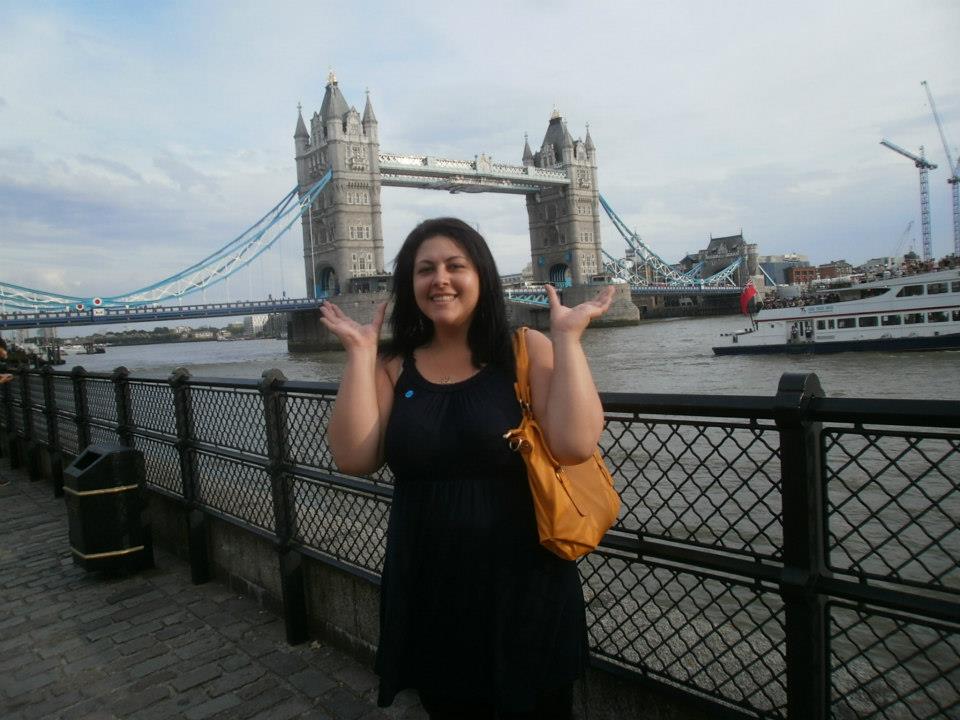Spring (March to May) and fall (September to November) are considered to be the best months to visit South Korea due to the mild weather and stunning seasonal scenery. Cherry blossoms bloom in the spring, while autumn features vibrant fall foliage. Summers can be hot and humid, and winter brings snow to northern regions and ski resorts.
Discover Tailor-Made South Korea Vacations
South Korea is one of Asia’s most dynamic destinations, where centuries of tradition meet cutting-edge innovation
Travellers are drawn to its mix of historical palaces, tranquil countryside, and high-energy cities—all easily connected by an efficient transportation system. In a single trip, you can hike mountain trails, explore historic temples, and dive into vibrant urban culture.
With Goway’s customized South Korea tours, your journey can be as relaxed or adventurous as you like. Whether it’s a Seoul travel package or a full country exploration, our experts craft luxury itineraries that showcase the very best of Korea.
Featured Highlights
- Strolling through the vibrant streets of Seoul’s Myeongdong district
- Exploring the ancient capital Gyeongju, often referred to “the museum without walls”
- Hiking to scenic waterfalls on volcanic Jeju Island
- Visiting the DMZ for a fascinating glimpse into modern Korean history
- Savouring Korean barbecue and street food with a local guide
- Taking part in a K-Pop dance class
Featured South Korea Trip Ideas
Nicknamed the “Land of the Morning Calm,” South Korea offers a captivating mix of serene landscapes and vibrant citiesA tailor-made journey lets you experience the full spectrum: wander temple grounds, explore Seoul’s buzzing Myeongdong district, or hike along Busan’s scenic coastline. With round-the-clock action, Seoul is a 24-hour city. Visit royal palaces or join a K-Pop dance class by day and enjoy sizzling Korean barbecue and street food classics by night. Busan, South Korea’s second city, feels like a breath of fresh air, with golden beaches and striking seaside temples such as Haedong Yonggungsa. Further south, Jeju Island draws nature lovers with its volcanic peaks, lava caves, and waterfalls. The best trips to Korea also include hidden gems, from Gyeongju’s royal tombs to the culinary capital of Jeonju, birthplace of bibimbap.
Read More
Classic Korea: Seoul, Gyeongju & Busan
Busan, Gyeongju, Seoul, and Gyeongbokgung PalaceEssential Korea: Seoul & Busan
Busan, Seoul, and Gyeongbokgung PalaceSeoul Discovery
Seoul and Gyeongbokgung PalaceBest of South Korea & Japan
Tokyo, Shibuya Crossing, Hiroshima, Kyoto, Fushimi Inari Taisha, and Kinkakuji Temple (Golden Pavilion)Ultimate Korea: Seoul, Gyeongju, Busan & Jeju
Jeju Island, Busan, Gyeongju, Seoul, and Gyeongbokgung PalaceEssential Seoul, K-Pop Edition
Seoul and Gyeongbokgung PalaceDon't see the
perfect trip idea?
Request a custom quote.
Turn your travel dreams into reality with Goway. Our customized vacations take travellers to all corners of the world.
What do Goway's travellers say?
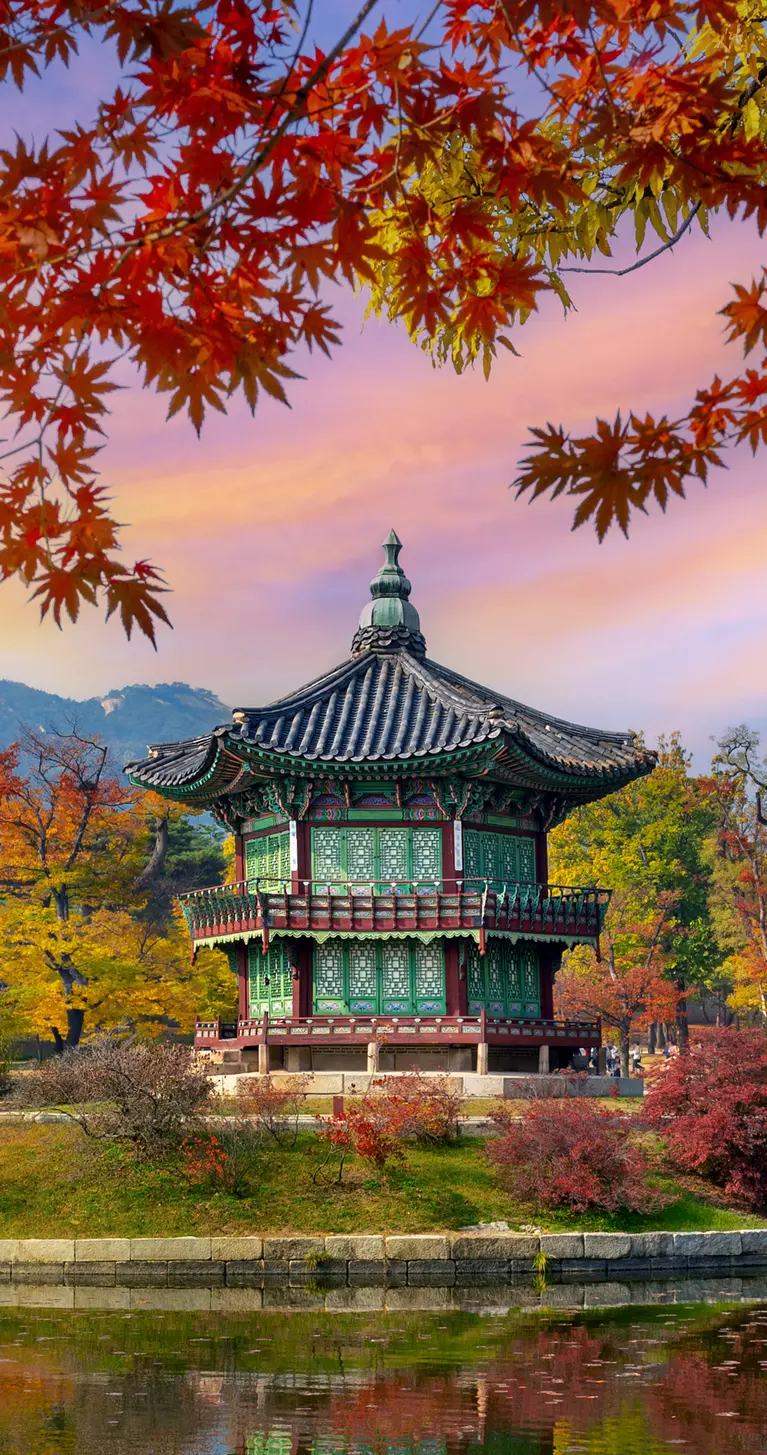
Get to know South Korea before you go.
Best Time To Visit
A four-season destination, South Korea welcomes travellers year-round.
The most popular times to visit are spring and fall, when the weather is mild and the landscapes are at their most photogenic.
Spring (March to May) brings cherry blossom season, known locally as beotkkot season. Towns and cities across the country burst into pink bloom, with Jinhae hosting the largest festival near Busan. “It’s similar timing to Japan’s blossoms, but far less crowded,” says Destination Specialist Maria Spitman.
Fall (September to November) offers crisp air, colourful foliage, and a calendar full of cultural festivals. “The weather is stunning in fall, especially October and November,” says Destination Specialist Harpreet Litt. Mountains like Seoraksan turn brilliant shades of red and gold, drawing hikers and photographers alike.
Summer (June to August) is hot and humid, perfect for those looking to spend time on the beach. Busan’s coastline comes alive, and there are plenty of festivals, such as the Boryeong Mud Festival, complete with mud slides and clay fights. That said, July and August are also the rainiest months, so pack rain gear and an umbrella.
Winter (December to February) is cold, particularly in the north, but it’s also a good time to see attractions with fewer crowds. Ski resorts in Gangwon Province rival those in Japan, and winter festivals add cheer to the season. Lunar New Year is widely celebrated, but closures of restaurants and stores typically last only a day or two.
Overall, the country offers something special no matter when you travel. Read more about the best time to visit South Korea and let us help you choose the best season for your South Korea journey.
What do the experts say?
try a stay at a traditional hanok accommodation (similar to a ryokan) with hanok dinner, which involves enjoying Korean cuisine, aka jeongsik (course meals) with banchan (side dishes). It's a rustic traditional experience, and one all globetrotters will love
Umbrellas are common; you can pick them up everywhere as well, but you'll find on sunny days as well as rainy ones that locals are using umbrellas and without one, you'll get a poke in the head now and again as you're walking on busy sidewalks.
Avoid July/August (rainiest months, tons of flooding even in the cities, and temple walks become hard), and Chuseok in September (their version of Thanksgiving - a 6 day holiday where everything is closed)
Visit during Spring to see the Cherry Blossoms! A great alternative to Japan's Cherry Blossoms.
Places To Go
Handcrafted journeys to our most popular places to visit in South Korea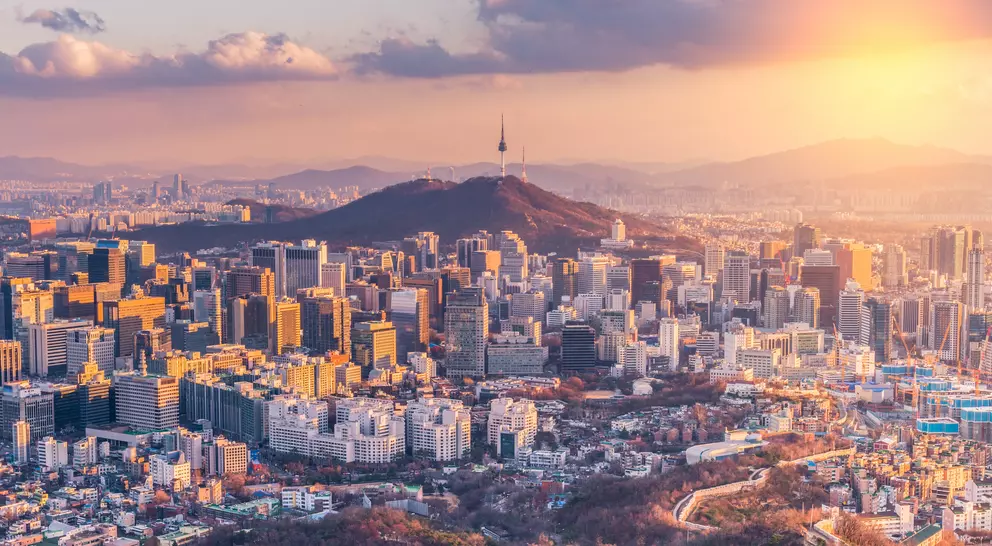
Seoul
Seoul is the capital city of South Korea. With a population of over 10.5 million people, it is also...
Seoul is the capital city of South Korea. With a population of over 10.5 million people, it is also South Korea’s largest city and its financial, political and cultural centre.A major settlement for...
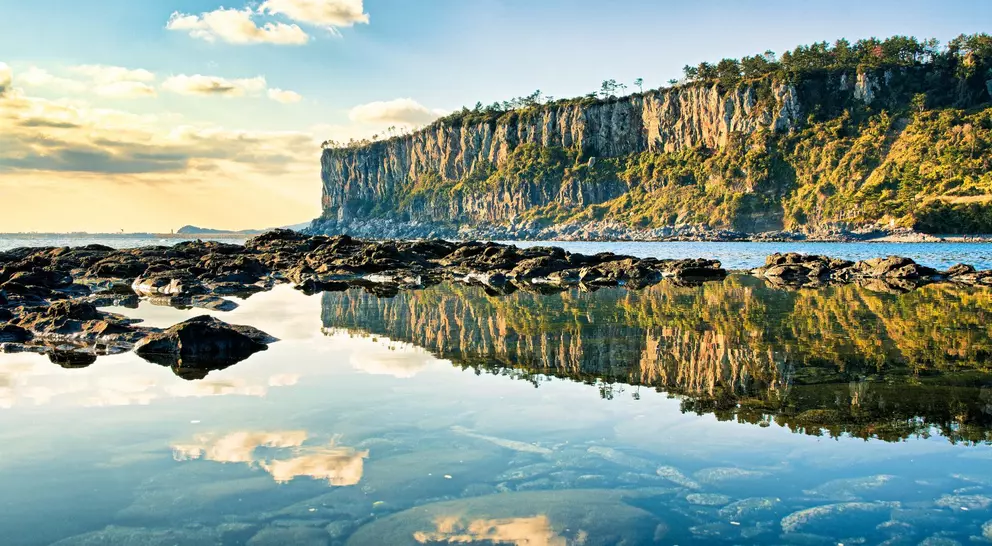
Jeju Island
On Korean vacations, Jeju Island is situated on South Korea’s largest island, located in the...
On Korean vacations, Jeju Island is situated on South Korea’s largest island, located in the country’s south end.Jeju Island lies in the Korea Strait and was once a part of Jeollanam-do Province...
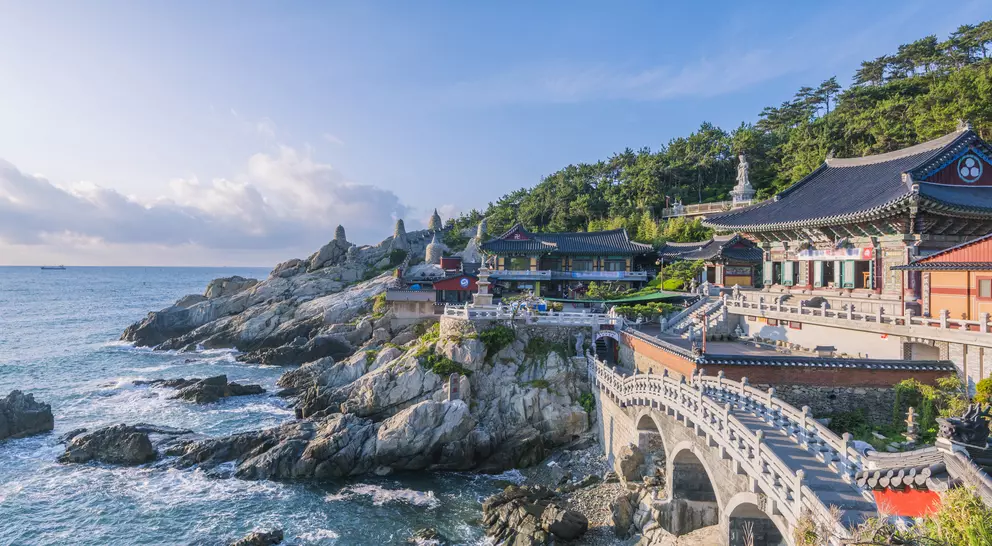
Busan
Busan is the second largest metropolis after Seoul on Korea vacations. Located on the southeastern...
Busan is the second largest metropolis after Seoul on Korea vacations. Located on the southeastern tip of the Korean Peninsula, Busan is the largest port city in South Korea and the world’s fifth...

Gyeongju
On Korean vacations, you will want to vist Gyeongju which was the capital city of the ancient...
On Korean vacations, you will want to vist Gyeongju which was the capital city of the ancient kingdom of Silla (57 BC – 935 AD), which ruled about two-thirds of the Korean Peninsula between the 7th...
Travel Styles
Explore South Korea by Travel Type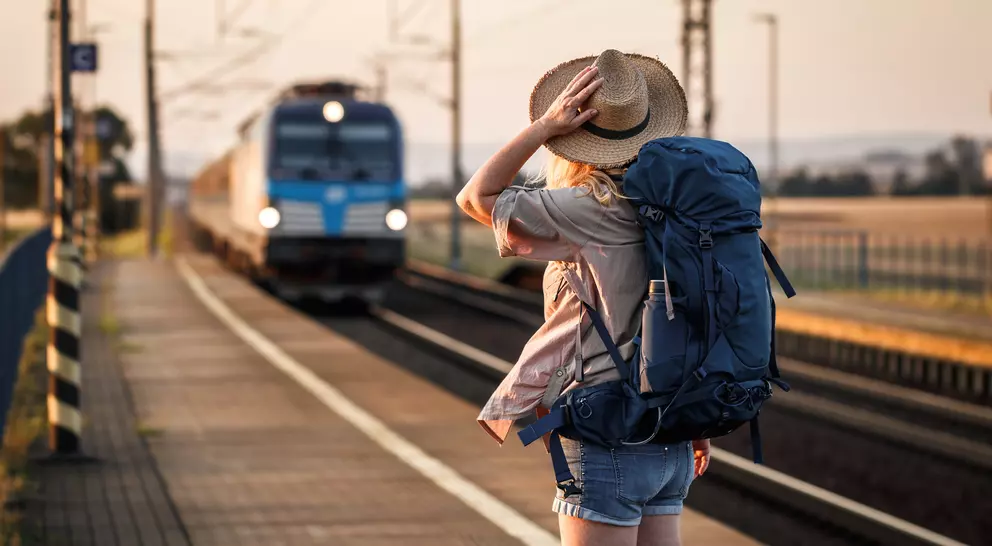
Ways to Travel
Discover your perfect travel style—crafted for every dream and journey.

Themes
Immersive adventures shaped by passion, such as food, culture, wellness, and wild discovery.
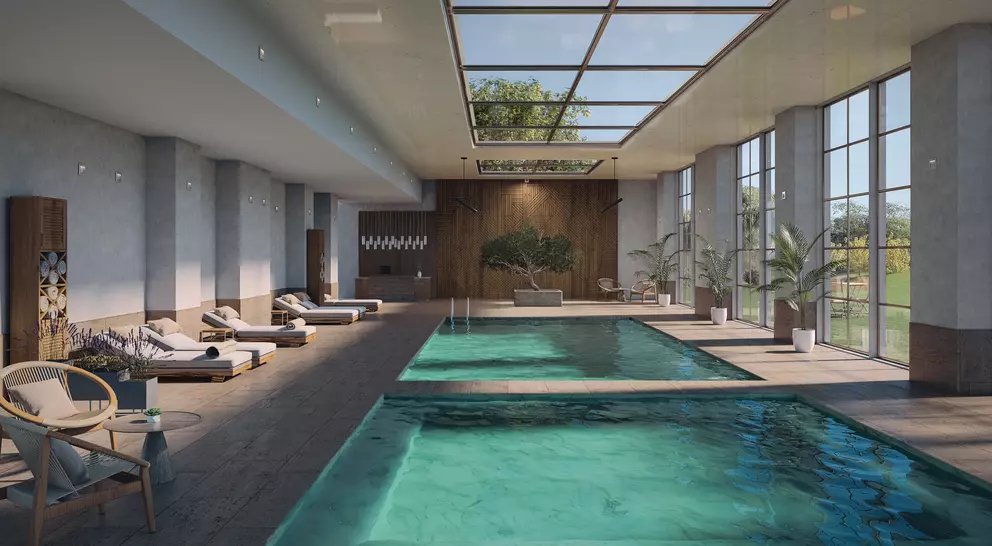
Collections
Curated journeys that capture the spirit, beauty, and essence of travel.

Featured
Extraordinary experiences handpicked to inspire, delight, and spark your wanderlust.

Ways to Travel
Discover your perfect travel style—crafted for every dream and journey.

Themes
Immersive adventures shaped by passion, such as food, culture, wellness, and wild discovery.

Collections
Curated journeys that capture the spirit, beauty, and essence of travel.

Featured
Extraordinary experiences handpicked to inspire, delight, and spark your wanderlust.
Frequently Asked Questions
What is the best time to visit South Korea?
How many days do I need in South Korea?
Seven to 14 days is enough time for Seoul, Busan, Jeju Island, and Gyeongju. Five days is enough if you’re just visiting one city, such as Seoul.
Do I need a visa for South Korea?
Many nationalities, including U.S. and Canadian citizens, enjoy visa-free entry for short stays.
What is South Korea famous for?
South Korea is known for its rich history, scenic landscapes, K-Pop, K-Dramas, K-Beauty, and delicious cuisine, including Korean barbecue, bibimbap, and kimchi.
Can I visit the DMZ from Seoul?
Yes. The Demilitarized Zone is about an hour’s drive from Seoul and is accessible via guided tours.
How do I get around South Korea?
High-speed trains connect cities, while subways, buses, taxis, and ride-hailing apps are available in urban areas. In general, public transportation is efficient, inexpensive, and easy to navigate.
Where can I try Korean barbecue?
Seoul, Busan, and most other cities have countless restaurants offering Korean barbecue.
What is Jeju Island known for?
Jeju Island is a UNESCO Biosphere Reserve boasting stunning volcanic landscapes, lava tubes, waterfalls, and peaks like Hallasan Mountain. The island has a unique culture and is also famous for its haenyeo, female free divers who harvest seafood from the ocean floor.
What currency is used in South Korea?
The South Korean won (KRW).
Can I ski in South Korea?
Yes. Resorts in the north and mountainous regions, like Pyeongchang, offer skiing and winter sports
What is a temple stay in South Korea?
Temple stays let visitors experience monastic life and Buddhist culture firsthand, including meditation, chanting, and traditional meals at monasteries.
Can I combine South Korea with Japan?
Yes. Short flights or ferries connect South Korea and Japan, making it possible to experience both countries in a single trip.
Unlock more by subscribing to our newsletter
With our newsletter, you’ll get access to regular communications that inspire you and help you explore the world your way
